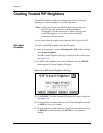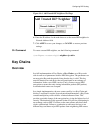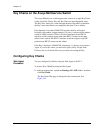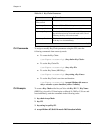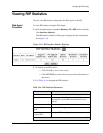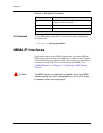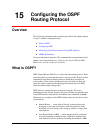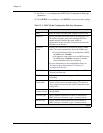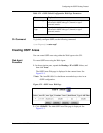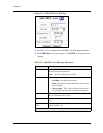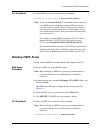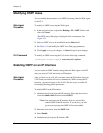
User Guide for the Avaya P580 and P882 Multiservice Switches, v6.1 15-1
15
Configuring the OSPF
Routing Protocol
Overview
The following information and procedures provided in this chapter pertain
to layer 3 module configuration only:
■ What is OSPF?
■ Configuring OSPF
■ Monitoring Switch Performance Using OSPF Statistics
■ NBMA IP Interfaces
For more information about the CLI commands that are mentioned in this
chapter, see Command Reference Guide for the Avaya P580 and P882
Multiservice Switches, Software Version 6.1
What is OSPF?
OSPF (Open Shortest Path First) is a link state networking protocol. Each
router broadcasts a packet that describes it own local links. Routers collect
information from these broadcast packets to build their own network
routing tables. These packets that describe the local links are short and
cause less traffic congestion than Routing Information Protocol (RIP),
which broadcasts large routing tables.
OSPF bases its routing decision on the least-cost path. The cost is
administered value, usually based on line speed. If there are multiple areas
in an OSPF domain, there must be a backbone area, identified as area 0.
When areas are configure in the OSPF domain, there are four basic router
classifications:
■ Internal Router — router with all directly connected networks
belonging to the same area. Routers with only interfaces in the
backbone area also belong to this category and have a single link-
state database.
■ Area Border Router (ABR) — router that has directly connected
networks belonging to multiple areas. ABRs have multiple link-
state databases, one for each area, including the backbone. ABRs




